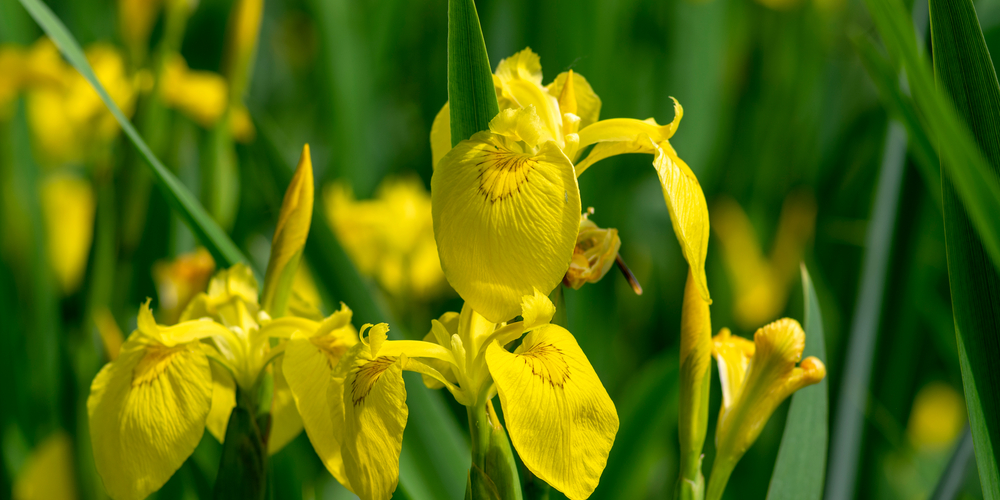Few plants put on a spectacular color show like irises in bloom. This is especially unique given that they’re hardy perennials and capable of growing and flourishing in various conditions and climate zones.
Specifically, what follows here deals with getting irises to bloom in Zone 7, conditions, which apply in 28 states across the US. Most of these conditions are fairly basic—winter temperatures that will go below freezing, which in turn means that the plants will go dormant before growing the following year, although there are irises that will bloom twice.
There are some key things you need to know, though, so let’s get to it, starting with the bloom itself.
The Lowdown on When Irises Bloom
Generally speaking, most irises bloom in early summer, which is basically the reason they’re known as “June bloomers.”. Some are what botanists call “remontant,” which means they can flower again in the late summer under the right conditions.
When it comes to light, irises bloom best in full sunlight. They can tolerate as little as a half-day of sun and still be able to bloom, but limiting the amount of light they get when planting isn’t the best way to get the most out of their natural beauty.
Also, they shouldn’t be shaded out by other plants, and they do best if they have a bed of their own. Savvy gardeners usually pair them with roses, peonies and lilies, but it’s important to separate irises from their companion flowers, and to separate the individual irises from each other.
For the best bloom, irises should be planted in fertile soil with a PH that’s somewhere between neutral and slightly acidic. Year-round drainage is important—irises prefer a moisture condition that gardeners refer to as “wet feet, dry knees,” but they won’t tolerate wet soil in the wintertime.
The depth of the plant is important to the bloom as well. To get the best results, loosen the soil with a garden fork or a tiller to a depth of around a foot, 15-inches tops, then mix in a short 2-4 inch compost layer.
One common mistake that can hinder an effective bloom is burying your irises too deeply. The lateral stems of these plants, which are referred to as the rhizome, need some amount of exposure to the elements, and a deep burial prevents that from happening.
Also, it’s usually not a good idea to mulch around the rhizome, as this can lead to rot. Irises tend to like a lot of water, so if you have a drought that threatens your bloom, don’t hesitate to do some extra watering if the regulations in your area allow it.
Timing is Everything
With regard to planting, the ideal time to put irises in the ground to ensure the best bloom is late summer to early fall. The temperature marker you’re looking for when you go to do this is after is night-time temps that range from 40-50 degrees Fahrenheit, possibly slightly higher.
Don’t be fussy about when to plant, though. If you get your irises later than that don’t hesitate to get them started, as it’s best to do that right away rather than try to time out the chronology for the best possible bloom.
As the irises come out in the spring and the time for the bloom approaches, you may need to stake them if they’re especially tall (think more than two feet). It’s a little bit of extra work, but the beauty of the bloom you’ll get is well worth the required effort.
It’s also important to do a pest watch to ensure the quality of the bloom. Look for iris borers in the leaves; the sign you’re after is dark, watery lines there, so if you see that you may have some work to do.
Once the bloom starts, make sure to remove the spent blooms on a consistent basis. This is especially true of bearded irises, which tend to flower sequentially along the buds that are spaced out intermittently along the stems.
Spacing is another thing to watch out for to keep your irises blooming in a timely fashion. Overcrowding can lead to a less illustrious bloom, so if you see signs of this you need to divide up the rhizomes so they all have adequate room. The general rule is to plant the rhizomes singularly or in groups of three, painting a distance of 1-2 feet between each group or individual flower.
The best time to do this kind of division is after the bloom. Think mid-summer, and start by carefully digging up the clumps of irises. You’ll likely notice that the original rhizome has produced several offshoots, so you need to separate them using a sharp knife.
When Do Irises Bloom in Zone 7?: Conclusion
Once you have a successful bloom, one of the best things about irises is that there are some more exotic varieties you can consider. These include varieties like Siberian irises and Japanese irises, but if you go this route you should do some homework to see if they apply to your specific Zone 7 conditions.

